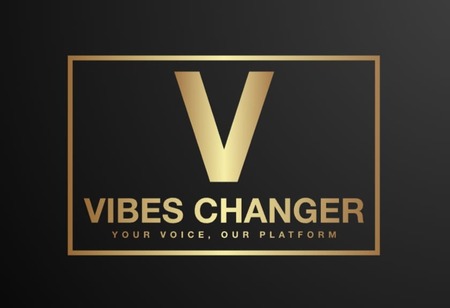The world of fashion is always evolving, and 2025 promises to be a groundbreaking year for the industry. In a society where technology, sustainability, and inclusivity take center stage, the way we view, wear, and create fashion will be radically different. From the rise of digital wardrobes to eco-conscious materials, here’s a glimpse into what fashion in 2025 will look like.
1. Sustainability as the New Standard
In 2025, sustainability will be more than just a buzzword; it will be the foundation of fashion. The industry, once notorious for its environmental impact, will undergo a profound transformation. Fast fashion will take a backseat as consumers demand products that are both eco-friendly and ethically made. Designers and brands will embrace sustainable practices from the ground up—using eco-friendly materials, promoting circular fashion (designing items for a longer life cycle), and finding creative ways to reduce waste.
Expect to see more clothing lines made from recycled fibers, plant-based textiles, and even fabrics that can decompose naturally. Furthermore, brands will integrate more transparent production methods, allowing customers to trace the journey of their clothes—from sourcing to production. A significant trend will be the rise of clothing rental services, where people can access high-quality, eco-conscious fashion without the environmental burden of overconsumption.
2. The Rise of Smart Textiles and Wearable Tech
Technology and fashion will continue to merge in 2025, giving rise to smart textiles and wearable tech. Clothing will become multifunctional, incorporating everything from sensors that monitor our health to garments that change color, texture, or shape according to our needs. Imagine a jacket that adjusts its insulation based on the temperature or a pair of shoes that track your step count and posture.
AI-powered fashion will also start playing a larger role, with virtual styling assistants offering personalized recommendations based on body type, weather, and personal taste. Wearable devices like smart glasses and rings will become part of the fashion landscape, helping us stay connected while adding a futuristic twist to everyday wear.
By 2025, we’ll likely see fashion brands introducing items that serve both as clothing and as essential tech tools, allowing people to stay fashionable while integrating seamlessly with the digital world.
3. Virtual Fashion: The Metaverse and Beyond
The concept of digital fashion will gain immense traction in the coming years. With the growth of the Metaverse and other virtual spaces, people will begin to dress their avatars in unique digital outfits. Virtual reality (VR) and augmented reality (AR) will open new opportunities for designers to experiment with bold, unconventional looks that might not be feasible in the physical world. This shift will change the way we think about style, as virtual clothing becomes a medium for self-expression, much like physical fashion today.
By 2025, expect to see major fashion houses and independent designers creating exclusive, digital-only collections. These garments will be purchased, worn, and traded within virtual environments, where the idea of “ownership” is no longer confined to physical items. What’s more, digital fashion shows will become more common, where runway events are streamed in VR, allowing global audiences to experience cutting-edge designs without leaving their homes.
4. Inclusive Fashion for All
Fashion in 2025 will become more inclusive than ever before. The movement toward diversity in terms of body size, gender identity, and cultural representation will continue to grow. No longer will fashion be bound by traditional standards of beauty. Gender-neutral designs will take center stage, with many brands focusing on unisex collections that allow consumers to break free from rigid gender norms.
Moreover, fashion brands will design clothes that cater to a broader range of body types. Expect a more inclusive sizing range, with options for petite, plus-size, and everything in between. Adaptive fashion, which caters to those with disabilities, will also become more mainstream, offering stylish and functional options for individuals with diverse needs.
The key to this inclusivity will be a broader understanding of fashion as a form of self-expression, where everyone can find pieces that reflect their unique identity and style.
5. Personalization and Customization at Scale
In 2025, mass production will give way to personalizedfashion. Consumers will demand more control over what they wear, and advancements in AI and 3D printing will enable designers to offer customized clothing at an unprecedented scale. Rather than settling for “off-the-rack” styles, people will have the opportunity to design their own pieces, choosing everything from fabric and color to fit and silhouette.
Bespoke clothing will move beyond the luxury market, becoming more accessible to the average consumer. Customization will extend to accessories, footwear, and even the fabrics used, allowing for one-of-a-kind designs that are truly unique. This personalized approach will give people more freedom to express their individuality while reducing the need for mass production, making fashion a more sustainable industry overall.
6. The Fusion of Streetwear and High Fashion
In 2025, streetwear will continue to influence highfashion. What was once seen as casual or subcultural will have fully infiltrated the luxury fashion world. Designers will merge the comfort and boldness of streetwear with the sophistication of haute couture, creating collections that blur the lines between high-end and everyday wear.
Collaborations between luxury fashion houses and streetwear brands will become even more common, with iconic names working together to create limited-edition collections that cater to diverse demographics. The emphasis will be on comfort, functionality, and bold design, with fashion-forward pieces that are equally stylish and wearable.
7. Fashion as a Tool for Social and Political Expression
By 2025, fashion will continue to serve as a powerful vehicle for social and political commentary. Designers and brands will use their platforms to highlight causes they care about, from climate change to racial justice and mental health awareness. Expect to see collections that raise awareness about pressing global issues, with garments that tell a story or communicate a message.
In addition to statement pieces, activism-driven fashion lines will gain momentum. Consumers will be able to wear their values on their sleeves—literally—through clothing that supports social causes or raises funds for charities. Fashion will no longer just be about aesthetics; it will be a way to contribute to a cause and make a tangible difference in the world.
Conclusion: A New Era for Fashion
Fashion in 2025 will be defined by innovation, inclusivity, and individuality. With technological advancements in wearables and virtual fashion, alongside a shift toward sustainability and personalization, the industry will look vastly different from today. As consumers become more conscious of their choices, fashion will not only reflect personal style but also the values and beliefs that shape the world around us.
In a world where fashion is not just about what we wear, but how we express ourselves, 2025 promises to be an exciting, transformative year for the industry.
#Fashion2025
#FutureOfFashion
#SustainableFashion
#TechInFashion
#DigitalFashion

